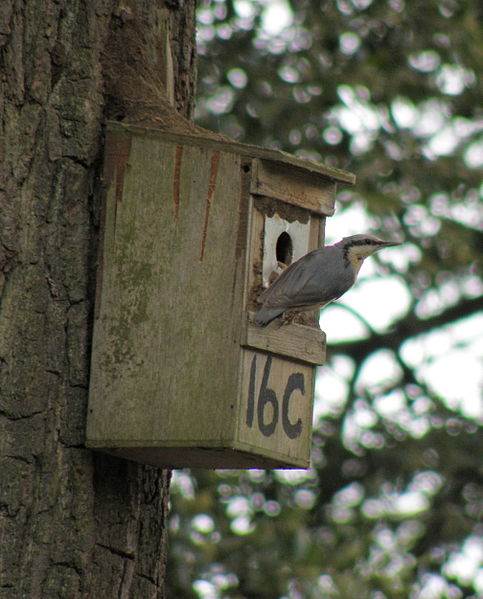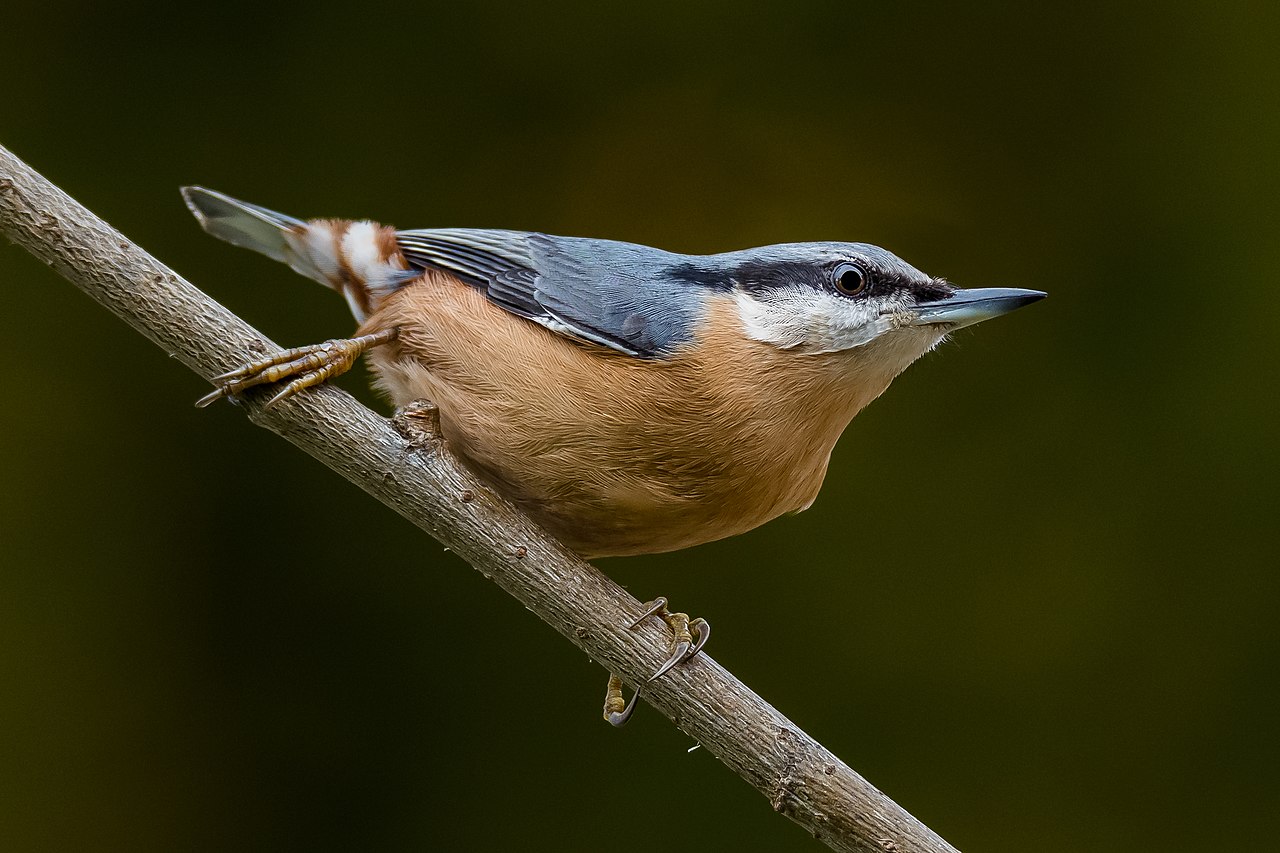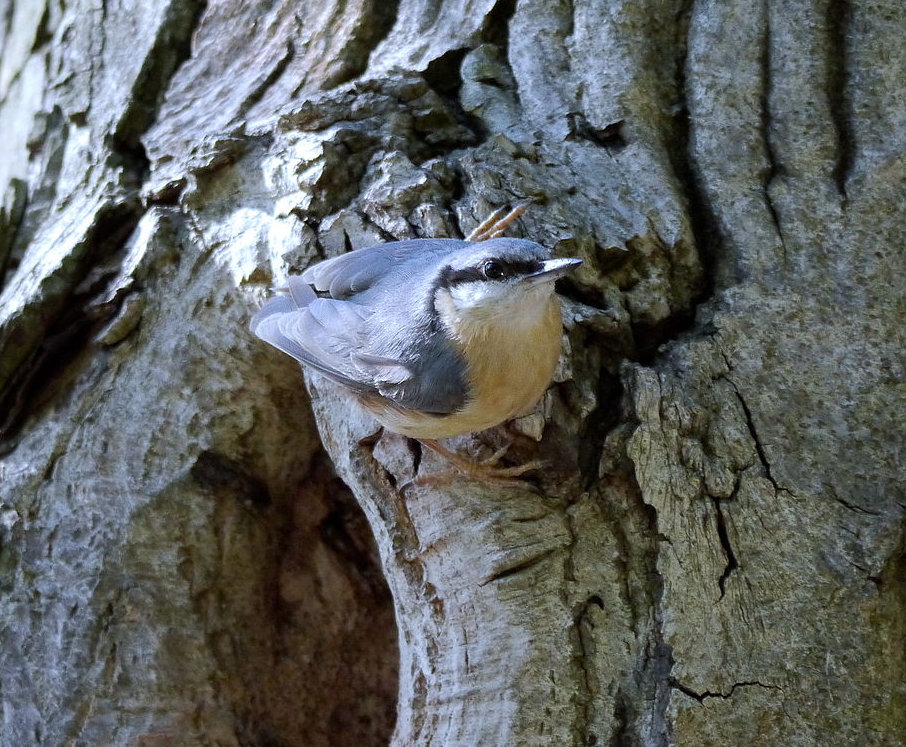Garden Wildlife
Garden Wildlife


What do they do?
Nuthatches are chiefly tree-dwellers, their stout claws allowing them to move acrobatically among the trunks, branches and twigs of trees, even moving down the bark headfirst. They will often flock with the various tits in winter which is when they are most likely to come to the garden. In the leafy summer woods you are more likely to hear them than see them, although they are not particularly shy birds. The adults maintain a territory throughout the year, and very rarely stray outside it. Nuthatches are essentially sedentary, with no evidence of significant migration into or out of the UK during winter.
How are they doing?
According to the BTO Breeding Birds Survey 2019 the nuthatch is doing well in Britain, with about 220,000 territories and evidence for much increased numbers over the last 20 years. They do not occur in Ireland but their range is extending north to Scotland.
Finding out more:
BTO profile on nuthatch
RSPB profile on nuthatch
Page written by Roy Smith, compiled by Steve Head
Nuthatch Sitta europaea
Nuthatch are delightful birds, but as tree-dwellers you have to keep your eyes open for them. They are basically birds of deciduous forest, but quite often use gardens in villages and even in towns if there are plenty of trees around. The are recorded in about 18% of gardens, mainly in England.
What do they look like?
Nuthatches are relatively small birds, at 14cm about the size of a robin. However they are much more brightly coloured, not at all your ‘little brown jobs’! They are compact, big-headed birds, with a short tail and apparently no neck. The crown, nape and back are light bluish grey in colour, the face and throat are white, with a buffy orange tinge developing from the breast to the underside. There is a very prominent black stripe running across the face from the base of the bill to the nape of the neck with a narrow white band above this from the base of the bill over and past the eye. The bill is pointed and stout, the legs short with stout toes and claws. See our tree-dwellers page for comparison photos.
What do they sound like?
The call of the Nuthatch is rather like that a high-pitched version of great spotted woodpecker but uttered in phrases, as in this recording (lots of other birds in this recording too – can you identify them?)



Nikolay Sariev, XC638298. Accessible at www.xeno-canto.org/638298.
Harald Knödler, XC539702. Accessible at www.xeno-canto.org/539702.
These calls are run together to form the song of the Nuthatch:
What do they eat?
You can tell from the bill and the arboreal habitat that the nuthatch is an insectivore, prying in flakes of bark, crevices and holes for invertebrate prey. In autumn and winter it eats seeds and fruit and comes to garden feeders for nuts, seeds and fats.
Where do they breed?
Nuthatches naturally use holes in old trees for nesting, generally with one brood of up to 8 eggs. They will reduce the size of the entrance hole using plastered mud if it iis too large. They will use a variety of nestboxes in the garden, with a 32mm entrance hole, but it needs to be high up (6m) on the trunk of a tree in a wooded area.
Nuthatch Sitta europaea
Nuthatch are delightful birds, but as tree-dwellers you have to keep your eyes open for them. They are basically birds of deciduous forest, but quite often use gardens in villages and even in towns if there are plenty of trees around. The are recorded in about 18% of gardens, mainly in England.


What do they look like?
Nuthatches are relatively small birds, at 14cm about the size of a robin. However they are much more brightly coloured, not at all your ‘little brown jobs’! They are compact, big-headed birds, with a short tail and apparently no neck. The crown, nape and back are light bluish grey in colour, the face and throat are white, with a buffy orange tinge developing from the breast to the underside. There is a very prominent black stripe running across the face from the base of the bill to the nape of the neck with a narrow white band above this from the base of the bill over and past the eye. The bill is pointed and stout, the legs short with stout toes and claws. See our tree-dwellers page for comparison photos.
What do they sound like?
The call of the Nuthatch is rather like that a high-pitched version of great spotted woodpecker but uttered in phrases, as in this recording (lots of other birds in this recording too – can you identify them?)
What do they eat?
You can tell from the bill and the arboreal habitat that the nuthatch is an insectivore, prying in flakes of bark, crevices and holes for invertebrate prey. In autumn and winter it eats seeds and fruit and comes to garden feeders for nuts, seeds and fats.
What do they do?
Nuthatches are chiefly tree-dwellers, their stout claws allowing them to move acrobatically among the trunks, branches and twigs of trees, even moving down the bark headfirst. They will often flock with the various tits in winter which is when they are most likely to come to the garden. In the leafy summer woods you are more likely to hear them than see them, although they are not particularly shy birds. The adults maintain a territory throughout the year, and very rartely stray outside it. Nuthatches are essentially sedentary, with no evidence of significant migration into or out of the UK during winter.
How are they doing?
According to the BTO Breeding Birds Survey 2019 the nuthatch is doing well in Britain, with about 220,000 territories and evidence for much increased numbers over the last 20 years. They do not occur in Ireland but their range is extending north to Scotland.
Finding out more:
BTO profile on nuthatch
RSPB profile on nuthatch
Page written by Roy Smith, compiled by Steve Head

These calls are run together to form the song of the Nuthatch:

Where do they breed?
Nuthatches naturally use holes in old trees for nesting, generally with one brood of up to 8 eggs. They will reduce the size of the entrance hole using plastered mud if it iis too large. They will use a variety of nestboxes in the garden, with a 32mm entrance hole, but it needs to be high up (6m) on the trunk of a tree in a wooded area.
What do they do?
Nuthatches are chiefly tree-dwellers, their stout claws allowing them to move acrobatically among the trunks, branches and twigs of trees, even moving down the bark headfirst. They will often flock with the various tits in winter which is when they are most likely to come to the garden. In the leafy summer woods you are more likely to hear them than see them, although they are not particularly shy birds. The adults maintain a territory throughout the year, and very rarely stray outside it. Nuthatches are essentially sedentary, with no evidence of significant migration into or out of the UK during winter.
How are they doing?
According to the BTO Breeding Birds Survey 2019 the nuthatch is doing well in Britain, with about 220,000 territories and evidence for much increased numbers over the last 20 years. They do not occur in Ireland but their range is extending north to Scotland.
Finding out more:
Page written by Roy Smith, compiled by Steve Head
























